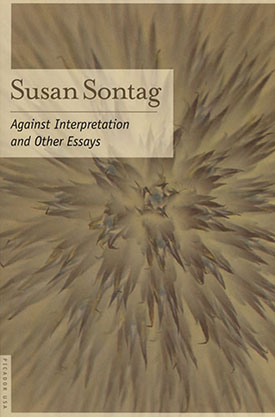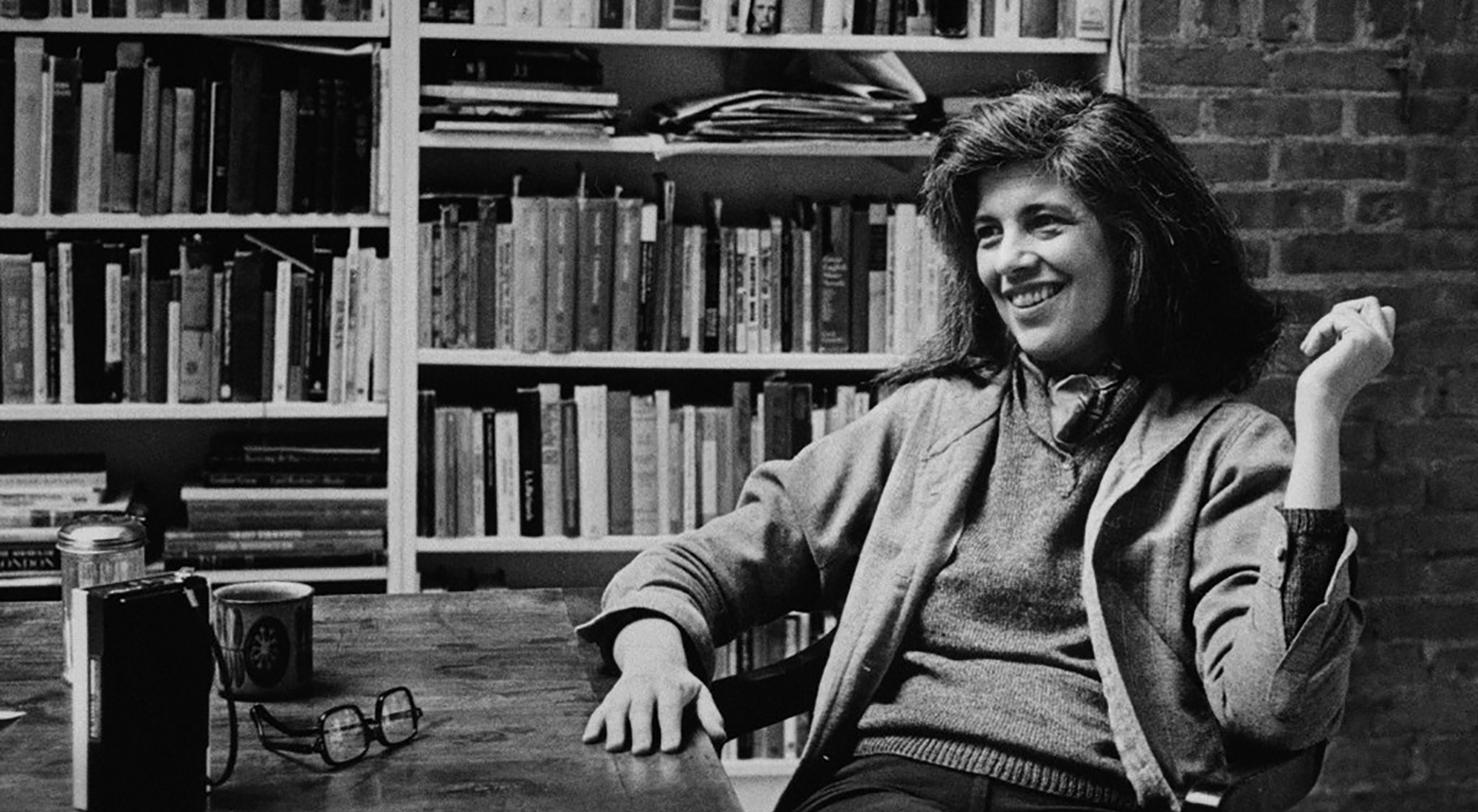
This Monday was the Met Gala, with its theme “Camp: Notes on Fashion” inspired by Susan Sontag’s seminal essay, “Notes on Camp.” The night featured wild fashion, with everything from Kacey Musgraves dressed as a Barbie doll to Jared Leto holding a replica of his own head and Billy Porter outfitted as an Egyptian god. Outlets like The Atlantic and GQ took to reviewing the looks of the night, but the questions underlying their responses were: What exactly is “camp”? And did any of these outfits actually achieve what Sontag was writing about?
What follows is an excerpt of Sontag’s “Notes on Camp” from her collection Against Interpretation, which was originally published in 1966.
Many things in the world have not been named; and many things, even if they have been named, have never been described. One of these is the sensibility–unmistakably modern, a variant of sophistication but hardly identical with it–that goes by the cult name of “Camp.”
A sensibility (as distinct from an idea) is one of the hardest things to talk about; but there are special reasons why Camp, in particular, has never been discussed. It is not a natural mode of sensibility, if there be any such. Indeed the essence of Camp is its love of the unnatural: of artifice and exaggeration. And Camp is esoteric–something of a private code, a badge of identity even, among small urban cliques. Apart from a lazy two-page sketch in Christopher Isherwood’s novel The World in the Evening (1954), it has hardly broken into print. To talk about Camp is therefore to betray it. If the betrayal can be defended, it will be for the edification it provides, or the dignity of the conflict it resolves. For myself, I plead the goal of self-edification, and the goad of a sharp conflict in my own sensibility. I am strongly drawn to Camp, and almost as strongly offended by it. That is why I want to talk about it, and why I can. For no one who wholeheartedly shares in a given sensibility can analyze it; he can only, whatever his intention, exhibit it. To name a sensibility, to draw its contours and to recount its history, requires a deep sympathy modified by revulsion.
Indeed the essence of Camp is its love of the unnatural: of artifice and exaggeration.
Though I am speaking about sensibility only–and about a sensibility that, among other things, converts the serious into the frivolous–these are grave matters. Most people think of sensibility or taste as the realm of purely subjective preferences, those mysterious attractions, mainly sensual, that have not been brought under the sovereignty of reason. They allow that considerations of taste play a part in their reactions to people and to works of art. But this attitude is naïve. And even worse. To patronize the faculty of taste is to patronize oneself. For taste governs every free–as opposed to rote–human response. Nothing is more decisive. There is taste in people, visual taste, taste in emotion–and there is taste in acts, taste in morality. Intelligence, as well, is really a kind of taste: taste in ideas. (One of the facts to be reckoned with is that taste tends to develop very unevenly. It’s rare that the same person has good visual taste and good taste in people and taste in ideas.)
Taste has no system and no proofs. But there is something like a logic of taste: the consistent sensibility which underlies and gives rise to a certain taste. A sensibility is almost, but not quite, ineffable. Any sensibility which can be crammed into the mold of a system, or handled with the rough tools of proof, is no longer a sensibility at all. It has hardened into an idea . . .
To snare a sensibility in words, especially one that is alive and powerful, one must be tentative and nimble. The form of jottings, rather than an essay (with its claim to a linear, consecutive argument), seemed more appropriate for getting down something of this particular fugitive sensibility. It’s embarrassing to be solemn and treatise-like about Camp. One runs the risk of having, oneself, produced a very inferior piece of Camp.
These notes are for Oscar Wilde.
“One should either be a work of art, or wear a work of art.”
–Phrases & Philosophies for the Use of the Young
1. To start very generally: Camp is a certain mode of aestheticism. It is one way of seeing the world as an aesthetic phenomenon. That way, the way of Camp, is not in terms of beauty, but in terms of the degree of artifice, of stylization.
2. To emphasize style is to slight content, or to introduce an attitude which is neutral with respect to content. It goes without saying that the Camp sensibility is disengaged, depoliticized–or at least apolitical.
3. Not only is there a Camp vision, a Camp way of looking at things. Camp is as well a quality discoverable in objects and the behavior of persons. There are “campy” movies, clothes, furniture, popular songs, novels, people, buildings. . . . This distinction is important. True, the Camp eye has the power to transform experience. But not everything can be seen as Camp. It’s not all in the eye of the beholder.
4. Random examples of items which are part of the canon of Camp:
Zuleika Dobson
Tiffany lamps
Scopitone films
The Brown Derby restaurant on Sunset Boulevard in LA
The Enquirer, headlines and stories
Aubrey Beardsley drawings
Swan Lake
Bellini’s operas
Visconti’s direction of Salome and ‘Tis Pity She’s a Whore
certain turn-of-the-century picture postcards
Schoedsack’s King Kong
the Cuban pop singer La Lupe
Lynn Ward’s novel in woodcuts, God’s Man
the old Flash Gordon comics
women’s clothes of the twenties (feather boas, fringed and beaded dresses, etc.)
the novels of Ronald Firbank and Ivy Compton-Burnett
stag movies seen without lust
5. Camp taste has an affinity for certain arts rather than others. Clothes, furniture, all the elements of visual décor, for instance, make up a large part of Camp. For Camp art is often decorative art, emphasizing texture, sensuous surface, and style at the expense of content. Concert music, though, because it is contentless, is rarely Camp. It offers no opportunity, say, for a contrast between silly or extravagant content and rich form. . . . Sometimes whole art forms become saturated with Camp. Classical ballet, opera, movies have seemed so for a long time. In the last two years, popular music (post rock-‘n’-roll, what the French call yé yé) has been annexed. And movie criticism (like lists of “The 10 Best Bad Movies I Have Seen”) is probably the greatest popularizer of Camp taste today, because most people still go to the movies in a high-spirited and unpretentious way.
6. There is a sense in which it is correct to say: “It’s too good to be Camp.” Or “too important,” not marginal enough. (More on this later.) Thus, the personality and many of the works of Jean Cocteau are Camp, but not those of André Gide; the operas of Richard Strauss, but not those of Wagner; concoctions of Tin Pan Alley and Liverpool, but not jazz. Many examples of Camp are things which, from a “serious” point of view, are either bad art or kitsch. Not all, though. Not only is Camp not necessarily bad art, but some art which can be approached as Camp (example: the major films of Louis Feuillade) merits the most serious admiration and study.
“The more we study Art, the less we care for Nature.”
–The Decay of Lying
Susan Sontag wrote four novels, The Benefactor, Death Kit, The Volcano Lover, and In America, which won the 2000 National Book Award for fiction; a collection of stories, I, etcetera; several plays, including Alice in Bed; and eight books of essays, among them On Photography, which won the National Book Critics Circle Award for criticism. Her books have been translated into thirty-two languages. In 2001, she won the Jerusalem Prize for the body of her work. She died in New York City in 2004.
